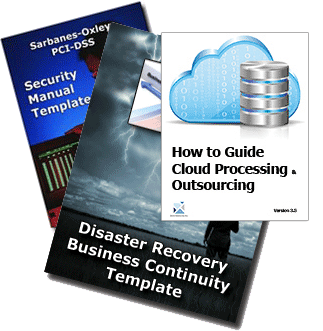Data Backup Strategy for Disaster Recovery and Business Continuity
Does your backup system feel about as current as this 8-track stereo sitting into your garage? Is it just as reliable? Maybe it's the perfect time to bring your backup in addition to recovery system into this 21st century.
 Typical backups generate duplicate data in a pair of ways: repeated full backups and repeated incrementals within the same file when it all changes multiple times. SOME deduplication system identifies at the same time situations and eliminates unnecessary files, reducing the volume of disk necessary to store your backups anywhere from 10-to-1 to 50-to-1 and beyond, depending on how much redundancy in your statistics.
Typical backups generate duplicate data in a pair of ways: repeated full backups and repeated incrementals within the same file when it all changes multiple times. SOME deduplication system identifies at the same time situations and eliminates unnecessary files, reducing the volume of disk necessary to store your backups anywhere from 10-to-1 to 50-to-1 and beyond, depending on how much redundancy in your statistics.
Deduplication systems also work their magic from the subfile level. To achieve, they identify segments with data (a segment is typically smaller than a file but larger than one byte) that will be redundant with other sectors and eliminate them. Raising use for this technology is to allow users to turn from disk staging systems (where they are storing only 1 night's worth of backups) that will disk backup strategies (where they're holding all on-site backups about disk).
There are two main kinds of deduplication. Target dedupe systems make it possible for customers to send traditional backups for a storage system that will then dedupe them; they tend to be used in medium to help large data centers together with perform at high tempo. Source dedupe systems usage different backup software cut the redundant data from the very start of process; they serve to contingency plan remote offices and mobile or portable users.
Target dedupe is further divided into target dedupe appliances which can dedupe common backup layouts, and target dedupe application that dedupes the backups from a given backup software package whenever they reach the backup server, but before these are written to disk.
Read On... Order DRP Download Sample DRP
Building Security in Disaster Reovery Plan
Tuned, pretested DR support capabilities and services are now helping midsize company managers reduce the risks of an extended business outage due to disaster, and at more reasonable costs than ever before. Today, it is possible to put in place disaster recovery technology and practices that may cost less per user supported than older technology that did not support DR.
 Cloud computing is one possible answer to the need for such security, flexibility,providing a highly automated,dynamic alternative for the acquisition and delivery of IT services. Today users are tapping into public and private clouds for computing resources and services without having to address the underlying technology. Companies are leveraging the massive scalability and collaboration capabilities of cloud computing to solve problems in ways that just were not possible before.
Cloud computing is one possible answer to the need for such security, flexibility,providing a highly automated,dynamic alternative for the acquisition and delivery of IT services. Today users are tapping into public and private clouds for computing resources and services without having to address the underlying technology. Companies are leveraging the massive scalability and collaboration capabilities of cloud computing to solve problems in ways that just were not possible before.
They are deploying new services with greater speed and without additional capital investment. As IT budgets continue to be stretched,cloud computing is enabling CIOs to do more with less. Virtualization,standardization and other fundamental features of cloud are lowering the cost of IT,simplifying IT service management and accelerating service delivery.
Such operational efficiency is helping companies capitalize on the globally net-worked world. It is enabling CIOs to leverage the infrastructure more effectively to support the business goals of their company. By lessening the drag on data center resources,cloud computing is enabling IT to hone in on real value creation,namely innovation. Rapid,technology-enabled innovation is vital to staying afloat in a highly volatile and uncertain economy. Cloud computing provides the platform for optimizing operations while creating and delivering the kind of innovative services that differentiate and propel the business forward.
These new DR implementations have provided some midsize companies with the means to avoid shutdowns when and if their IT centers go offline - reducing expected disaster-induced outage hours (downtime) per year. Importantly, research shows these implementations can reduce costs by more than 35% compared with unprepared centers using older technology.
Advanced processes and technologies can ease the backup process, introduce more automation into the data replication process, and enable IT staff to protect more applications with restart and recovery capabilities. Executives of midsize businesses may wonder how to prepare for the possibility that a calamity could wipe out their IT operations. The words "disaster recovery" (DR) evoke images of the earthquake in Japan, or flooding in Chicago and Japan - events that took businesses of all sizes offline.
Read on DR/BC Security Bundle Order DR BC Security Bundle Download Sample DR BC Security Bundle


